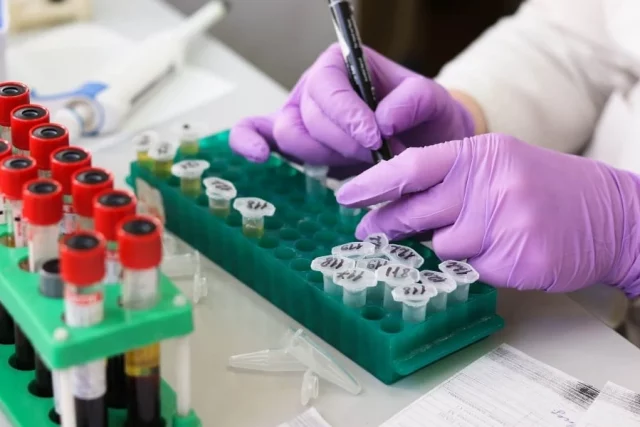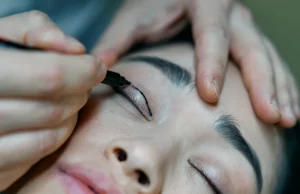An important aspect of any laboratory is ensuring that all equipment is sterile. This is essential for preventing the spread of contamination and disease. There are several ways to sterilize your lab equipment, but not all are effective. This blog post will discuss the different sterilization methods and how to ensure your equipment is immaculate.
Leverage An Autoclave
An effective way to sterilize your lab equipment is to use an autoclave. This machine uses steam and pressure to kill bacteria and other microorganisms. It works by heating the water to a very high temperature and forcing it into the chamber where the equipment is placed. The steam penetrates all of the nooks and crannies of the equipment, killing anything that might be lurking inside. Autoclaves are typically used for glassware, metal instruments, and plastic items. In this case, the seasoned providers of durable autoclave machines behind leadsonics suggest you opt for one with a pre-vacuum cycle. This will remove air from the chamber before sterilization begins, making it more effective.
One of the primary advantages of using an autoclave is that it can sterilize many items simultaneously. This is a big time saver, particularly if you have a lot of equipment to clean. It is also an effective sterilization method, as long as it is used correctly. Autoclaves need to reach a specific temperature and pressure to be effective. If the machine is not calibrated perfectly, it may not reach the critical temperature and pressure, which could allow bacteria to survive. The downside to using an autoclave is that it can be expensive to purchase and operate. In addition, some items cannot withstand the high temperatures and pressures of an autoclave and may be damaged by this sterilization method. For example, autoclaves should not be used to sterilize electronic equipment.
Use Chemicals
Another option for sterilizing your lab equipment is to use chemicals. Several different chemicals can be used for this purpose, but they must be used carefully. Some common chemicals used for sterilization are bleach, isopropyl alcohol, and ethylene oxide. Bleach is effective, but it can damage some equipment. Isopropyl alcohol is also a good choice for sterilizing lab equipment, but it can be corrosive to some materials. Ethylene oxide is a very effective sterilant but also very toxic and should only be used in well-ventilated areas.
Using chemicals to sterilize your lab equipment is a good option if you work with small, delicate items that cannot withstand the high temperatures of an autoclave. It can also be used if you do not have access to an autoclave. However, chemicals can be dangerous if not used properly. They can also damage some types of equipment. For example, ethylene oxide is very effective at sterilizing lab equipment but can also damage electronic equipment. Be sure to read the labels carefully and follow the instructions when using any chemical.
Sterilize With Heat
Sterilizing your lab equipment with heat can be done in many ways, but the most common method is to use an oven. Ovens can be used to sterilize various lab equipment, including glassware, metal instruments, and plastic items. To sterilize your equipment in an oven, you will need to preheat the oven to a temperature of at least 160 degrees Fahrenheit. Once the oven is preheated, you can place your lab equipment on the wire racks and bake for 30 minutes. Be sure to let the equipment cool before handling it.
Another way to use heat to sterilize lab equipment is to boil it. Water can sterilize various items, including glassware, metal instruments, and plastic items. To sterilize your equipment by boiling, you will need to bring a pot of water to a boil and then place your lab equipment in the pot. Boil the equipment for at least 30 minutes to ensure that all bacteria are killed. However, let the equipment cool before handling it, as boiling water can be very hot. One of the benefits of heat sterilization is that it can kill a wide variety of bacteria. However, it is essential to note that heat sterilization will not kill all types of bacteria. For example, heat sterilization will not kill spores.
Radiation Is An Option
Radiation works by damaging the DNA of bacteria, which prevents them from reproducing. Several different types of radiation can be used to sterilize lab equipment, including ultraviolet light, gamma rays, and x-rays. Ultraviolet light is the most commonly used type of radiation for sterilization. It is effective at killing a wide variety of bacteria, including spores. Gamma rays and x-rays are also effective at sterilizing lab equipment, but they can be more damaging to the equipment.
Radiation is a good option for sterilizing lab equipment if you are working with items that cannot withstand the high temperatures of an autoclave or the corrosive nature of chemicals. Radiation can also be used to sterilize various things, including glassware, metal instruments, and plastic items. However, radiation can damage some types of equipment and be expensive. In addition, radiation can be dangerous if not used properly. If you are considering using radiation to sterilize your lab equipment, you should talk to a professional about the best way to do it.
Tips For Choosing The Correct Method
When sterilizing your lab equipment, it is crucial to choose a method that is effective at killing the bacteria you are working with. For instance, if you are working with bacteria resistant to heat, you will need to use a different sterilization method. In addition, you should consider the type of equipment you are working with. Some types of equipment, such as electronic equipment, can be damaged by specific sterilization methods. Be sure to read the labels carefully and talk to a professional before sterilizing your lab equipment.
Sterilizing your lab equipment is vital to ensure that you work with clean and sterile tools. There are several different methods that you can use to sterilize your lab equipment, including autoclaving, using chemicals and heat, as well as radiation. Be sure to choose the best way for the equipment you are working with.














